The first house I wanted to install solar panels in had a roof with a very steep pitch. So much so that I was worried that it would be too steep to install solar panels on. To be honest, I wasn’t even sure if you could and it got me researching and reading a ton on if roofs can be too steep for solar panels.
A roof can be too steep for solar panels. The optimal roof angle for solar installations is between 15 and 40 degrees. While solar panels can be installed on roofs with varying degrees of slope, extremely steep roofs can present challenges for proper installation and maintenance of solar panels.
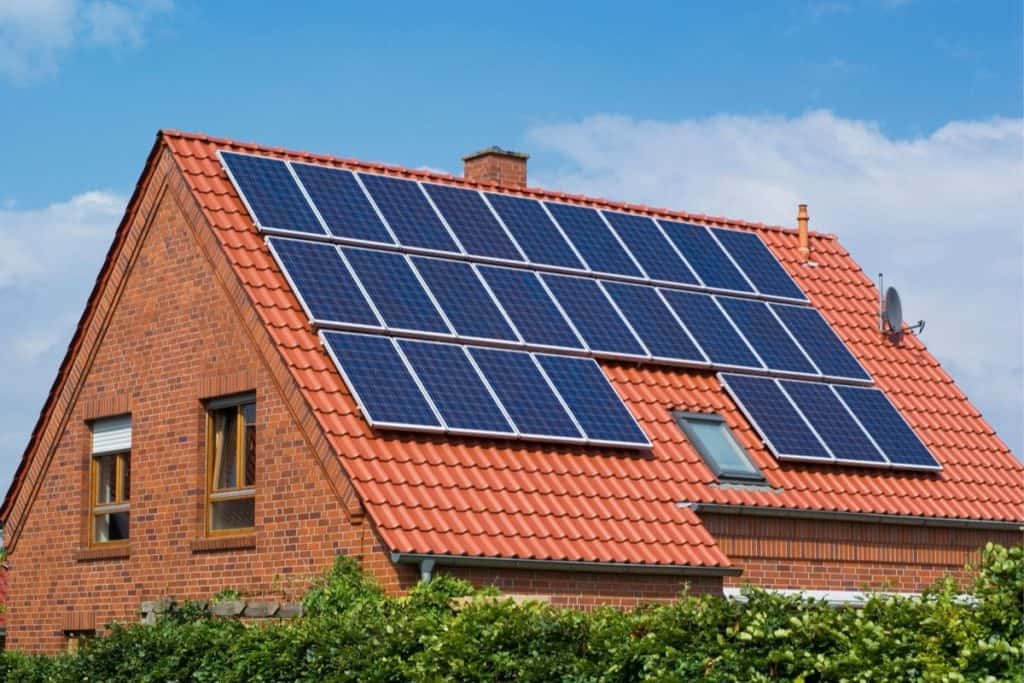
Here are a few reasons why a roof may be considered too steep for solar panel installation:
- Safety concerns
Steep roofs can pose safety risks for installers during the installation process. Working at a significant angle increases the chances of accidents and falls. Safety regulations may dictate maximum slope limits for solar panel installations.
- Accessibility and maintenance
Steep roofs can make it difficult to access and maintain solar panels. Cleaning, inspection, and repairs become more challenging and potentially hazardous on steeply angled roofs.
- Efficiency and performance
Solar panels typically work optimally when they are tilted at an angle that allows them to receive maximum sunlight throughout the day. If the roof slope is too steep, it may not be possible to achieve the optimal tilt angle, which can result in reduced energy production.
- Mounting and stability
Mounting solar panels securely on steep roofs can be more complex and may require additional structural reinforcement to ensure stability and prevent damage caused by hail storms, high winds or other extreme weather conditions like hail storms..
It is however important to note that the installation feasibility of solar panels on a particular roof depends on several things, including the specific slope, roof material, local climate, where in the world you are (latitude), and available mounting options.
In some cases, specialized mounting systems or adjustments to the installation process can overcome challenges posed by steep roofs.
Once I figured that out I decided it may be best to consult with a professional solar installer to make sure I wasn’t going to mess up the installation.
The first thing I asked him was how steep we could go…
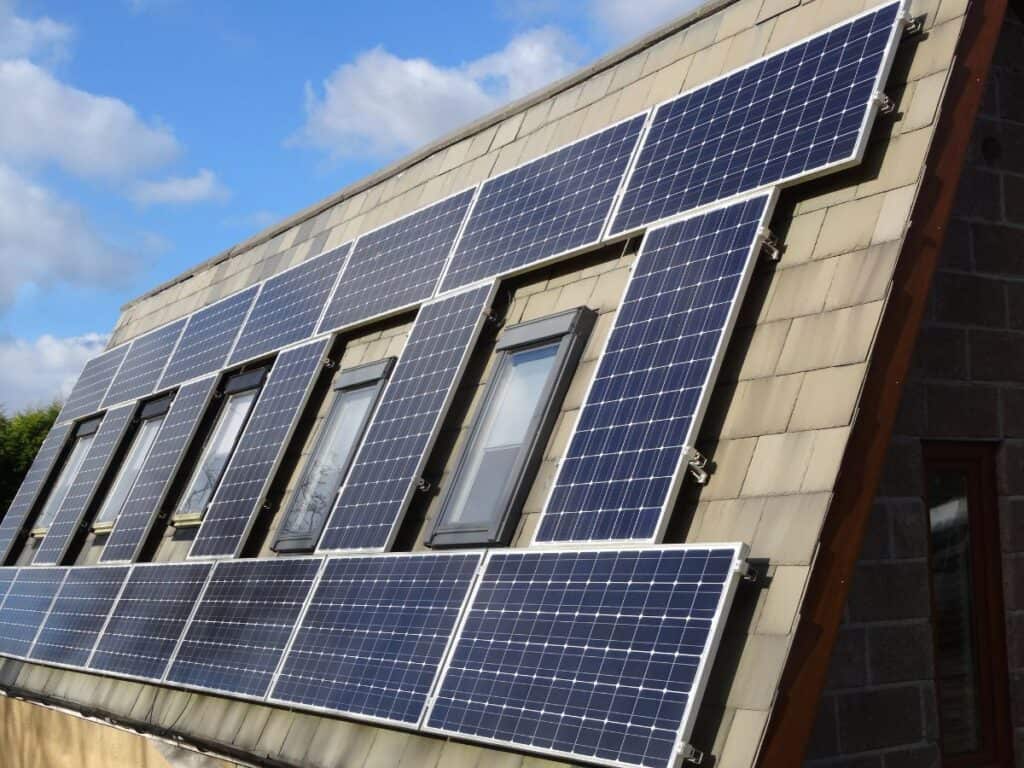
What is the maximum roof angle for solar panels?
For standard residential or commercial rooftop installations, roof angles typically range from 15 to 40 degrees. This range allows for optimal energy production while facilitating installation, maintenance, and ensuring safety for installers.
That said, the maximum roof angle for solar panels does depend on a couple of things for example the specific solar panel technology you’re using, what mounting system you’re using, your local climate conditions, and safety regulations.
While there isn’t a universally defined maximum angle, here are two general considerations to take into account when installing solar panels on a roof with a steep pitch:
- Adjustable mounting systems
Some mounting systems allow for adjustable tilt angles, which can accommodate steeper roof slopes. These systems allow the panels to be angled towards the sun, optimizing energy generation.
- Specialized installations
In specific cases, such as solar installations on steeply pitched roofs or in mountainous regions, customized mounting systems or techniques can be used to install solar panels on roofs with angles exceeding the typical range.
The steeper you go the more important it becomes to consult with a professional solar installer or structural engineer who can assess your roof’s specific characteristics, including the angle, load-bearing capacity, and local regulations, to determine the most suitable approach for your solar panel installation.
They will consider factors such as maximizing energy production, ensuring safety, and complying with relevant codes and guidelines.
So with all that said, let’s look at how you maximize the amount of solar power your solar panels produce…
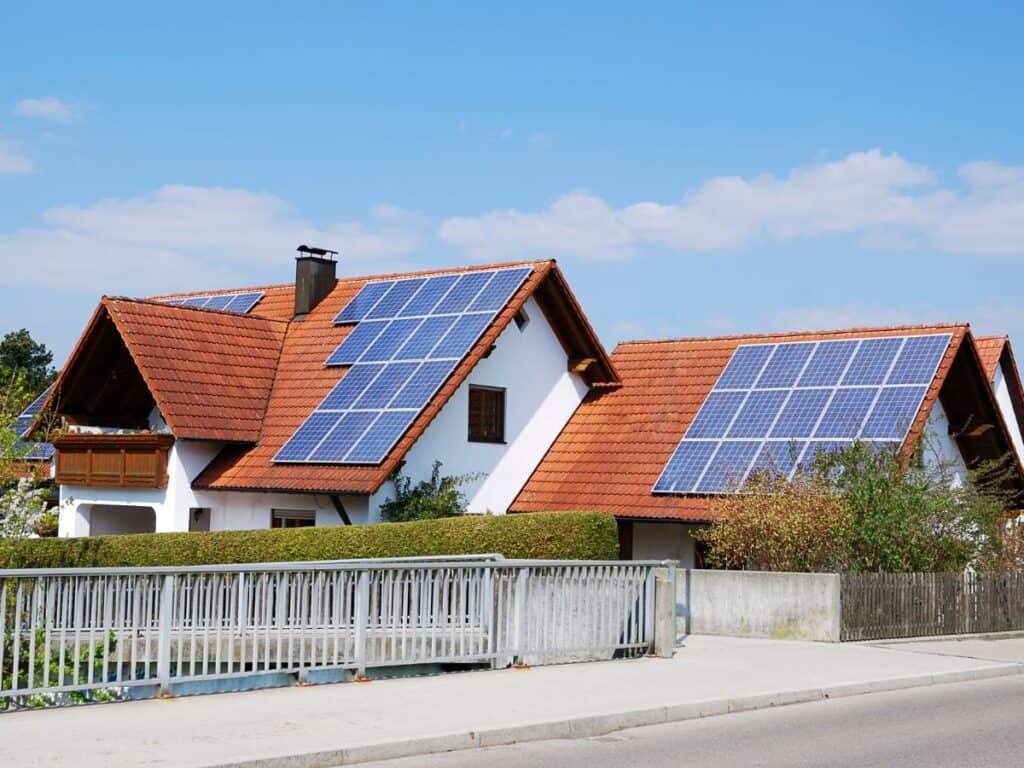
What is the best roof angle for solar panels?
For locations near the equator, a tilt angle of around 0-15 degrees is good, for mid-latitude locations, a tilt angle of around 30-40 degrees, and for higher latitude locations, a steeper tilt angle of 45 degrees or more may be required.
Let’s dig into why the best roof angle for solar panels differs from installation to installation…
The best roof angle for solar panels depends on various factors, including your geographical location, the specific solar panel technology used, and your energy goals. There is however a general range that is considered optimal for maximizing energy production throughout the year.
For fixed solar panel installations, a roof angle equal to the latitude of your location is often recommended as a starting point.
This means that if you are located near the equator (lower latitudes), a lower tilt angle is recommended, while higher latitudes call for a steeper tilt angle.
Here are some general guidelines:
For locations near the equator
Tilt angle: 0-15 degrees
This flatter angle helps capture more sunlight during the low winter sun when the sun’s path is closer to the horizon.
For mid-latitude locations
Tilt angle: 30-40 degrees
This angle balances energy production throughout the year, capturing more sunlight during the winter months when the sun is lower in the sky and less during the summer when the sun is higher.
For higher latitude locations
Tilt angle: 45 degrees or more
This steeper angle helps maximize energy production during the shorter winter days when the sun is at its lowest point in the sky.
It’s important to note that these are general guidelines, and other factors such as shading, local climate conditions, available roof space, and specific energy goals should be taken into consideration.
Consulting with a professional solar installer or engineer can help determine the most optimal roof angle for your specific circumstances.
They can also consider any local regulations or aesthetic considerations that may impact the tilt angle selection.
This is all great but how do you actually work out the pitch angle of your roof?
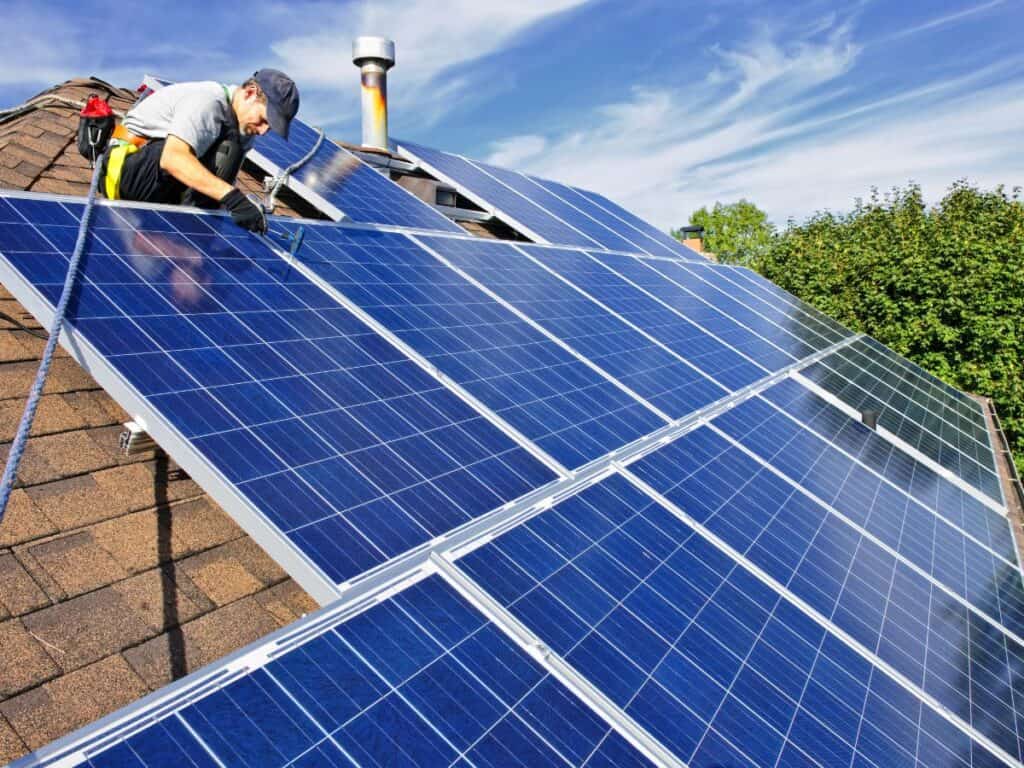
How to work out your roof pitch angle?
To work out your roof pitch angle, you can use three different methods depending on the information you have available.
Here are three common approaches:
- Measuring the pitch angle directly:
- Place a ladder or scaffolding near the roof so that you can safely access it.
- Using a carpenter’s level or an inclinometer, position it on a rafter or a level surface on the roof.
- Adjust the level until it is perfectly horizontal, ensuring that the bubble is centered.
- Measure the vertical distance (rise) and horizontal distance (run) between the level and the roof surface.
- Calculate the pitch angle using the formula: pitch angle = arctan(rise / run).
- The result will be in degrees, and it represents the angle of the roof pitch.
- Using pitch indicators or tools:
- Some roofing tools or pitch indicators are available that can directly measure the pitch angle. These tools often have a protractor or digital display to provide accurate readings.
- Follow the manufacturer’s instructions to properly position and use the tool on your roof. It may involve attaching the tool to a level section of the roof and reading the displayed pitch angle.
- Consulting architectural plans or construction documents:
- If you have access to architectural plans or construction documents for your property, the roof pitch angle may be specified in the drawings or specifications. Look for symbols, notes, or measurements related to the roof pitch or slope.
Remember to prioritize safety when accessing the roof, using appropriate equipment and taking necessary precautions to avoid accidents or falls.
If you’re unsure or uncomfortable measuring the roof pitch angle yourself, it’s recommended to consult with a professional such as a roofer, builder, or architect who can accurately determine the pitch angle for you.
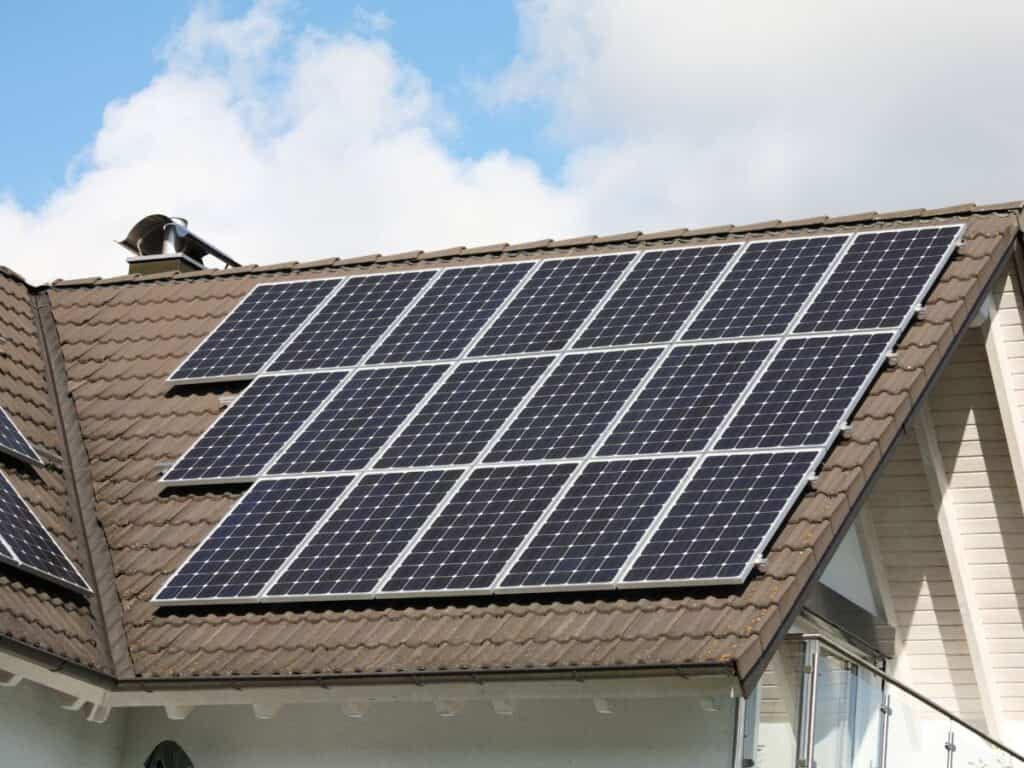
If in this process you discover that your roof is too steep for solar panels, you might be wondering if there is anything else you can do to still get solar power.
What can you do if your roof is too steep for solar panels?
If your roof is deemed too steep for solar panel installation, there are several alternatives and options you can consider to harness solar energy:
- Ground-mounted solar panels
- Solar pergolas or awnings
- Solar carports
- Community or shared solar
- Off-site solar installations
Let’s dig into each of these 5 in a bit more detail now…
1. Ground-mounted solar panels
If your property has available space on the ground, you can explore installing solar panels on a ground-mounted system. This involves placing the solar panels on a freestanding structure or pole mounts in a sunny area on your property. You can be more flexible in placing your panels and adjust them to maximize sunlight exposure by mounting your system on the ground
2. Solar pergolas or awnings
Consider strategically positioning pergolas or awnings on your property for solar panel installation.
These structures can provide shade, aesthetic appeal, and serve as a support for solar panels. You can custom-design solar pergolas or awnings to fit your specific needs and maximize solar energy
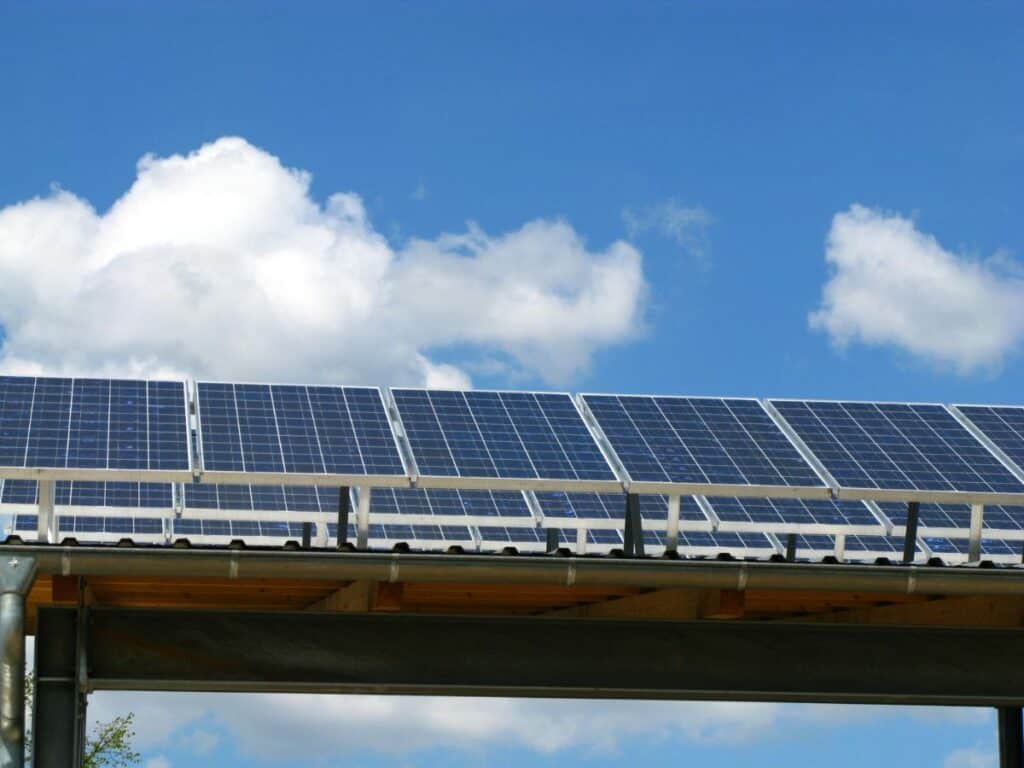
3. Solar carports
If you have parking space on your property, solar carports can serve a dual purpose by providing shade for your vehicles and generating solar power. You can mount solar panels on the carport structure, effectively utilizing the available space and converting it into a solar energy system.
4. Community or shared solar
In some regions, community solar projects or shared solar programs are available. These initiatives allow multiple individuals or households to collectively invest in a solar array located in a shared location, such as a nearby field or open area. Participants can benefit from the energy generated by the shared solar installation, even if their individual roofs are not suitable.
5. Off-site solar installations
If installing solar panels on your property is not feasible, you can explore options for participating in off-site solar installations. This typically involves subscribing to a solar energy provider or purchasing solar power through a power purchase agreement (PPA) from a solar farm or a larger-scale solar installation located elsewhere.
Once again. It’s important that if you are looking at any of these option to consult with a professional solar installer or energy consultant who can assess your specific situation, evaluate alternative options, and provide guidance on the most suitable approach for harnessing solar energy given your roof’s limitations.
They can help you determine the optimal solution based on your energy needs, available space, and local regulations.
